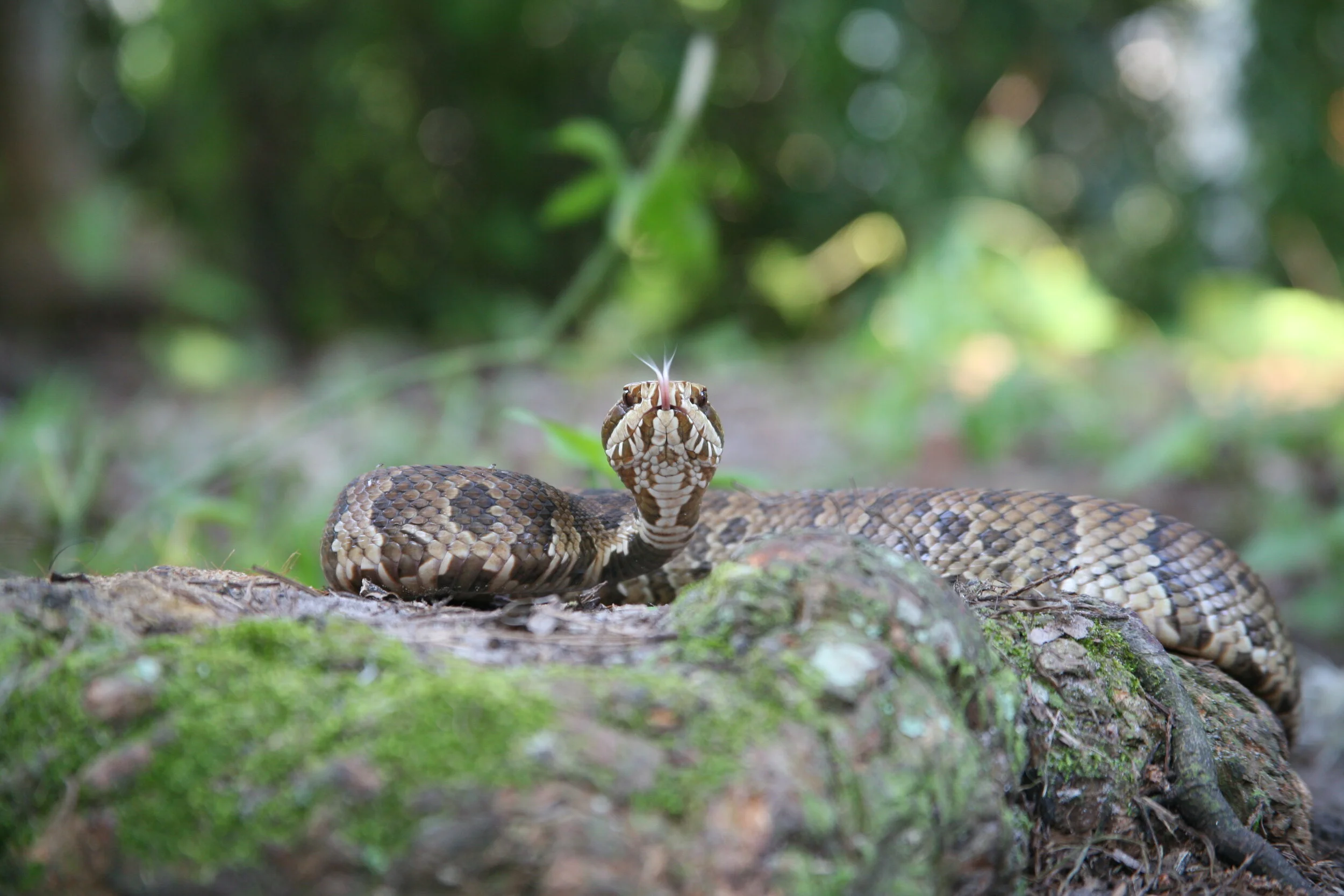Florida Cottonmouth AKA Water Moccasin
Agkistrodon piscivorus conanti
A Cottonmouth also known as a Water Moccasin are considered to be fairly common, but they are not as common as most people think. The term “water moccasin” is miss used and is often used to describe any species of snake near water specifically non venomous water snakes since they will share the same habitats. The cottonmouth is the world's only semiaquatic viper! Let’s get the facts and learn about one of the most misidentified snakes in Florida!
Photo by Daniel Durden
Photo by Daniel Durden
Cottonmouth, The snake gets its name from the threat display that they will use when cornered or approached and feel threatened. They will curl up and flash the cotton white inside of the mouth. This is used to scare off predators and yes humans are considered predators to these animals. They much rather flee then bite and most bites occur when a person is trying to capture or kill the snake!
Identification!
Here's the fun part because when cottonmouths are born they look different than the adults. The average adult size is 20-48 inches. Adults are heavy bodied with a coloration of dark brown to black. Some faint patterns on the body may be more visible when the snake is wet. Both juvenile and adults has a dark broad band on the sides of the head that will give a mask like appearance over the eyes.
Juveniles are brightly colored with lite reddish to tan colored blotches and bands outlined in black. They also have a yellow tail tip. Juvenile cottonmouth are often mistaken for copperheads. Check out the copperheads page for geographic range.
The biggest comparison is the Florida watersnake and Banded watersnake being confused with the cottonmouth. Look at these pictures side by side to see the visual difference between both juvenile and adult cottonmouth, copperheads and the Florida watersnake!
Adult Cottonmouth
Photo by John Ruggeri
Juvenile Cottonmouth
Photo by Ed Cassano
Juvenile Copperhead
Photo by Ed Cassano
Florida Watersnake
Photo by Ed Cassano
Habitat preference is wetlands or waterways throughout Florida. For example they may frequent the areas along streams, springs, rivers, lakes or ponds, marshes and swamps, including retention ponds and canals. Although they prefer to stay near water sources they can wander from those areas looking for alternative food source or breeding.
Diet is mostly fish, frogs and small mammals.
Breeding is most often in late spring with most births occurring during the summer months. Females generally only breed every other year and will give live birth to 1 and 15 young per litter. The average length of each newborn is about 7 inches.
Cool fact! Juveniles will engage in a action called caudal luring! This is when the yellow colored tail tip is wriggled to lure prey such as frogs and lizards within a striking distance.






